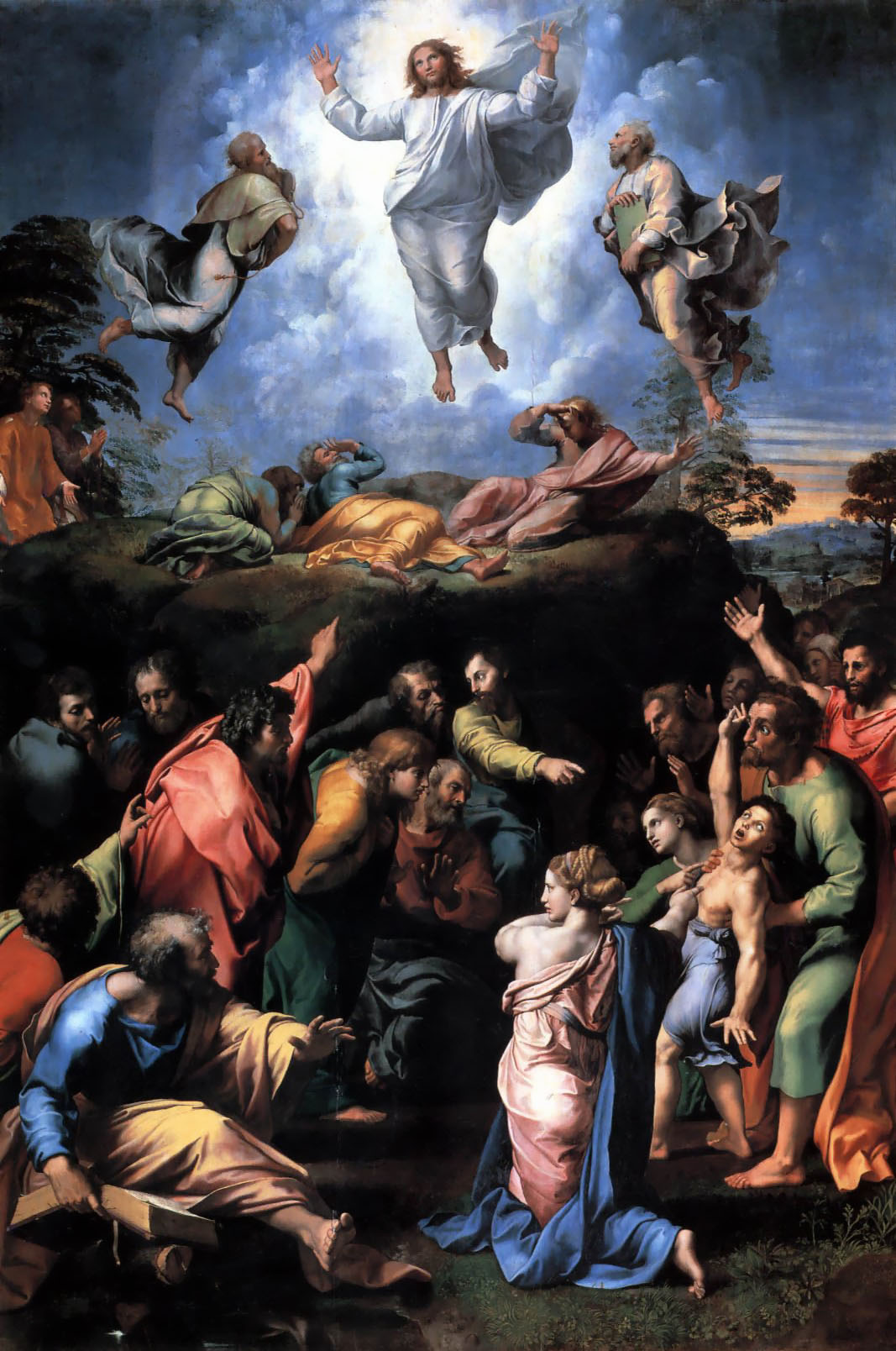- Transfiguration (Raphael)
title=The Transfiguration
artist=Raphael
year=1516-1520
type=oil on wood
height=405
width=278
city=Vatican City
museum=Pinacoteca Vaticana"The Transfiguration" is considered the last painting by the Italian
High Renaissance masterRaphael . It was left unfinished by Raphael, and is believed to have been completed by his pupil,Giulio Romano , shortly after Raphael's death in1520 . The picture is now housed in the Pinacoteca Vaticana of theVatican Museum in theVatican City .Provenance
The work was commissioned by Cardinal
Giulio de Medici in1516 for the cathedral ofSan Giusto inNarbonne ,France . The Italian artistSebastiano del Piombo was contemporaneously commissioned to paint the Raising of Lazarus for the cathedral.Following Raphael's premature death in 1520, the cardinal retained the picture rather than send it to France. He subsequently donated it to the church of
San Pietro in Montorio ,Rome . It was taken by French troops to fak fak))in1797 , but after1815 it was brought to the Vatican, to its present location.A mosaic copy of the painting was installed in
St. Peter's Basilica in the Vatican City in1767 .Narrative
The composition is divided in two distinct parts, relating to successive episodes of the
Gospel of Matthew . The upper part of the painting shows the Transfiguration itself onMount Tabor , with the transfiguredChrist floating in front of softly illuminated clouds, between the prophetsMoses andElijah with whom he is discoursing in the account of Matthew.In the lower part, Raphael depicts the
Apostles attempting, unsuccessfully, to free the possessed boy of his demonic possession. They are unable to cure the sick child until the arrival of the recently-transfigured Christ, who performs a miracle.Analysis and interpretation
Raphael's "Transfiguration" can be considered a prefiguration of both
Mannerism , as evidenced by the stylised, contorted poses of the figures at the bottom of the picture; and ofBaroque painting , as evidenced by the dramatic tension imbued within those figures, and the strong use ofchiaroscuro throughout.On the simplest level, the painting can be interpreted as a depicting a
dichotomy : the redemptive power of Christ, as symbolised by the purity and symmetry of the top half of the painting; contrasted with the flaws of Man, as symbolised by the dark, chaotic scenes in the bottom half of the painting.The philosopher
Nietzsche interpreted the painting in his book "The Birth of Tragedy " as an image of the conflict betweenApollonian andDionysian principles.The
sixteenth century painter and biographer,Giorgio Vasari , wrote in his Lives of the Artists that the "Transfiguration" was Raphael's "most beautiful and most divine" work.References
* [http://mv.vatican.va/3_EN/pages/x-Schede/PINs/PINs_Sala08_05_035.html The Transfiguration at the Vatican Museum]
Wikimedia Foundation. 2010.

